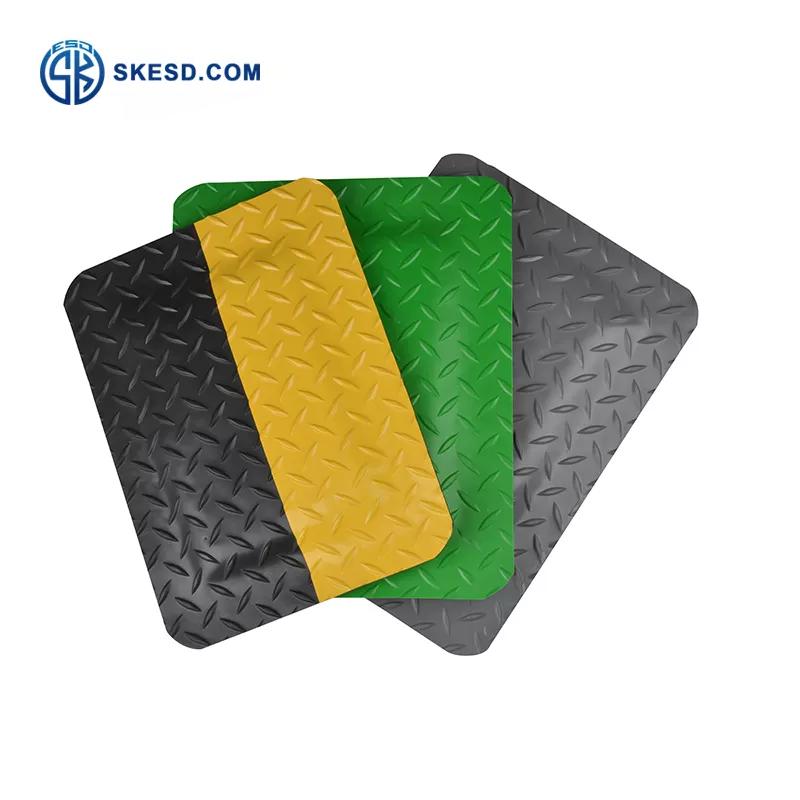Welcome to our comprehensive guide on ESD mats! If you’re in search of reliable information on different types of ESD mats and how to choose the right one for your specific needs, you’ve come to the right place. Our goal is to provide you with a comprehensive resource that not only educates but also helps you make an informed decision when it comes to ESD mat selection.
Understanding ESD and Its Impact
ESD, or Electrostatic Discharge, is a phenomenon that occurs when there is a sudden flow of electricity between two electrically charged objects. In various industries and environments, ESD can cause damage to sensitive electronic components, leading to malfunctions, data loss, and even complete device failure. This is where ESD mats play a crucial role in preventing such incidents.

Types of ESD Mats
- Conductive Mats: Conductive mats are designed to provide a highly conductive path for static electricity, allowing it to flow safely away from sensitive equipment. These mats are typically made of materials like carbon or metallic fibers and offer excellent grounding capabilities.
- Dissipative Mats: Dissipative mats, also known as anti-static mats, have a higher electrical resistance than conductive mats. They are designed to gradually discharge static electricity in a controlled manner, preventing sudden discharges that could damage sensitive devices. Dissipative mats are commonly used in environments where a slower discharge rate is required.
- Two-Layer Mats: Two-layer mats combine the benefits of both conductive and dissipative mats. They have a conductive layer for rapid discharge of static electricity and a dissipative layer for controlling the flow and preventing quick discharges. These mats are suitable for environments that require a balance between rapid and controlled discharge.
- Three-Layer Mats: Three-layer mats take the concept of two-layer mats further by incorporating an additional insulative layer. This layer acts as a barrier, preventing the ESD generated on the top surface from affecting the work area below. Three-layer mats are often used in environments where isolation and protection of sensitive equipment are critical.
Factors to Consider When Choosing an ESD Mat
Now that you are familiar with the different types of ESD mats, let’s delve into the key factors to consider when selecting the most suitable mat for your specific needs:
-
Environmental Conditions
Assess the environment where the ESD mat will be used. Factors such as temperature, humidity, and exposure to chemicals can influence the performance and durability of the mat. Ensure that the chosen mat is compatible with the specific conditions of your working environment.
-
Surface Resistance
Surface resistance is a critical specification to consider as it determines how effectively the mat will control static electricity. Different applications require different levels of surface resistance. For example, highly sensitive electronics might require a mat with a lower surface resistance to ensure efficient grounding.
-
Size and Configuration
Consider the size and configuration of the ESD mat that will best accommodate your workspace. Measure the available area and determine the required dimensions to provide ample coverage for the equipment and individuals who will be working in the vicinity.
-
Maintenance and Cleanliness
Regular cleaning and maintenance are essential to maximize the lifespan and effectiveness of your ESD mat. Look for mats that are easy to clean, resistant to common chemicals, and can withstand the wear and tear of daily use. This will ensure a long-lasting and reliable solution for your ESD protection needs.
Choosing the right type of ESD mat is vital for maintaining a static-safe environment and protecting sensitive electronic equipment. By understanding the different types available and considering key factors such as environmental conditions, surface resistance, size and configuration, and maintenance requirements, you can make an informed decision that aligns with your specific needs.
continue reading
Related Posts
Rohs 2.0 has emerged as a crucial aspect of compliance […]




